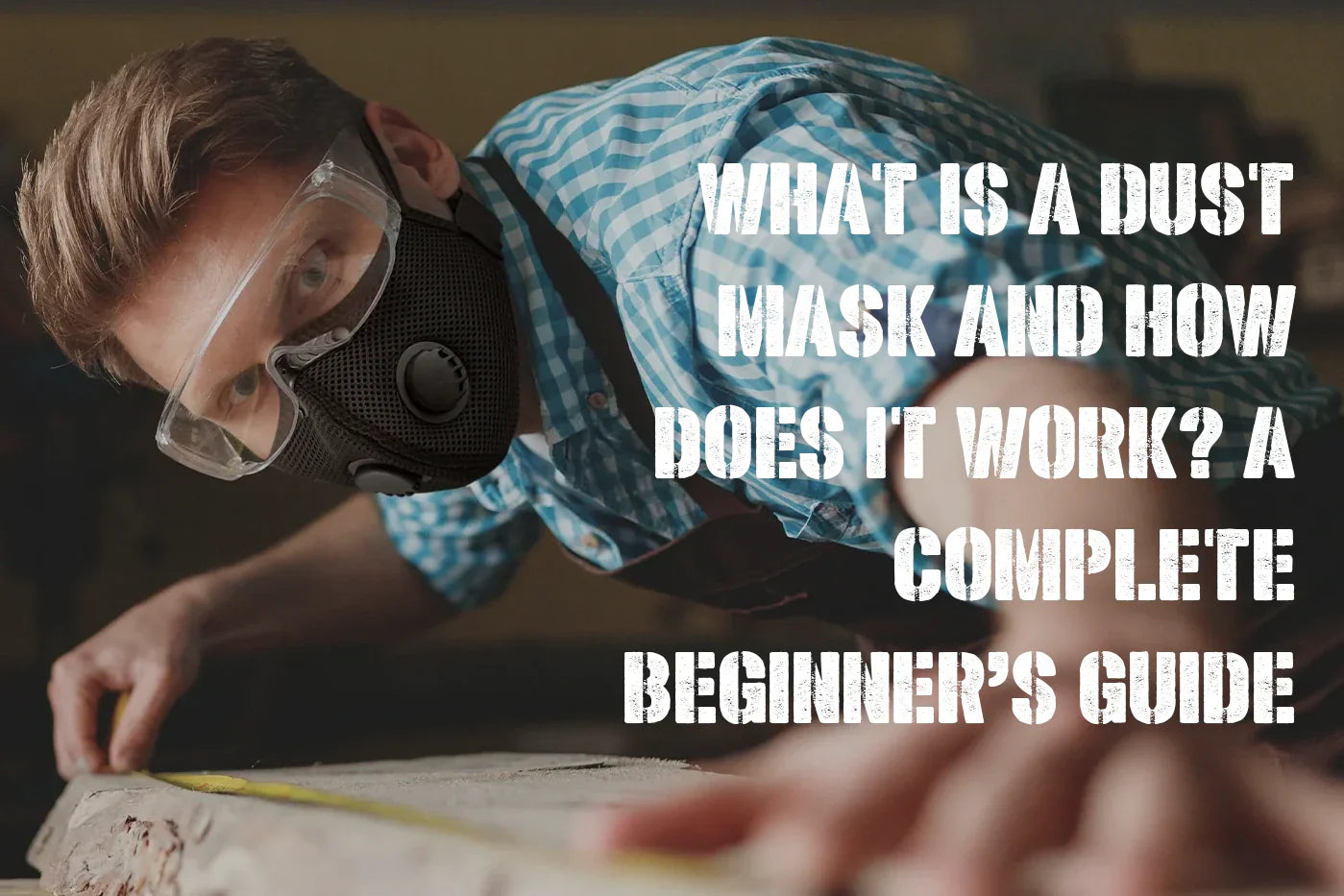What Is a Dust Mask and How Does It Work?
In today’s world, air quality is a growing concern—whether you're working in your garage, mowing the lawn, or navigating construction sites. Dust masks have become essential gear for anyone exposed to airborne particles, but what exactly is a dust mask, and how does it work?
Let’s break it down.
What Is a Dust Mask?
A dust mask is a flexible, lightweight facial covering designed to protect the wearer from inhaling dust, dirt, pollen, sawdust, and other fine airborne particles. Unlike medical masks or full respirators, dust masks are specifically built for low-to-moderate exposure in non-toxic environments—like home renovation, woodworking, gardening, or cycling in urban areas.
They typically cover the nose and mouth and are secured with straps behind the ears or around the head.
How Does a Dust Mask Work?
Dust masks operate on a simple yet powerful principle: mechanical filtration. The mask’s layers—often made of non-woven synthetic fibers—trap airborne particles as you breathe in. High-quality dust masks use multi-layer filters, some of which include activated carbon to help absorb odors and certain organic vapors.
Here’s how it works step-by-step:
-
Particle Interception – Large particles like sawdust are physically blocked by the mask's outer layer.
-
Electrostatic Attraction – Middle layers use electrostatic charge to attract and trap smaller particles.
-
Activated Carbon (Optional) – For masks with carbon layers, harmful fumes or odors are neutralized.
-
Exhalation Valve (Optional) – Some premium masks, like the BASE CAMP® N Series, have a one-way valve to make exhaling easier and prevent heat buildup.
What Types of Dust Can It Filter?
A good dust mask can filter:
-
Fine construction dust
-
Wood particles
-
Pollen
-
Household dust
-
Animal dander
-
Textile fibers
-
Light smoke or smog
However, it's important to note: dust masks are not the same as NIOSH-rated respirators, which are required for toxic gases or asbestos. Always choose the right protection for your environment.
Common Uses for Dust Masks
Dust masks are surprisingly versatile. People across different fields use them daily:
-
DIY Enthusiasts – During sanding, drilling, and painting
-
Woodworkers – To block sawdust and resin
-
Gardeners and Farmers – When mowing lawns or working with compost
-
Cyclists and Commuters – In polluted urban areas
-
Warehouse Workers – Around dry goods, cardboard, or powder materials
In short: if there’s airborne particulate matter around, a dust mask is likely useful.
Key Features to Look For in a Dust Mask
Not all masks are created equal. Here’s what separates a good one from a throwaway:
✅ High Filtration Efficiency – Look for >95% particle blocking
✅ Adjustable Nose Clip – Improves fit and reduces fogging for glasses wearers
✅ Comfortable Straps – For long-term use without ear pain
✅ Reusable Filters – Environmentally friendly and cost-effective
✅ Exhalation Valve – Especially useful for heavy work or warm environments
Why BASE CAMP® Dust Masks Are a Reliable Choice
BASE CAMP® Dust Masks are trusted by over 1 million users worldwide. They’re designed not just for protection, but for comfort, durability, and daily practicality.
-
✅ Replaceable activated carbon filters
-
✅ Skin-friendly fabric and foam nose pad
-
✅ Anti-fog design for eyeglass wearers
-
✅ Stylish, professional appearance for every lifestyle
Whether you’re a weekend warrior in your garage or a professional contractor, BASE CAMP® keeps your lungs safe without slowing you down.
Final Thoughts
Dust may seem harmless, but long-term exposure—even in small amounts—can lead to respiratory issues. A dust mask is a simple, affordable way to protect your health during daily work or hobbies.
So the next time you reach for your tools, paintbrush, or lawnmower, don’t forget one more essential item:
A high-quality dust mask that works as hard as you do.



Share:
🌲 The Story of a 12-Year-Old Woodworker — And a Gentle Reminder of What It Means to Love What You Do
Understanding Mask Types: From Cloth Covers to Professional Dust Respirators